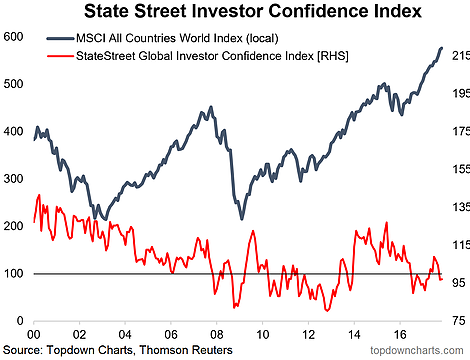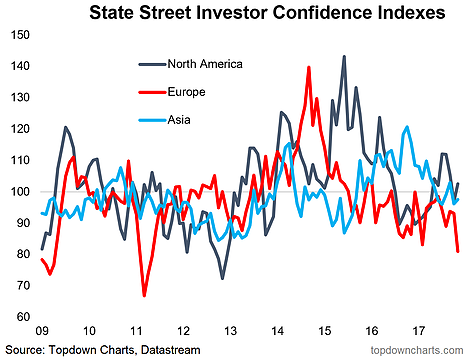For the second month in a row the State Street Investor Confidence Index came in below 100 (the index uses State Street’s global custodian business to gauge investor sentiment based on exposures/trading, and readings below 100 indicate institutional investors are selling/reducing exposure to risk assets). The November reading was 97.1 – basically unchanged from 96.9 in October. As the title suggests, this represents institutional investors selling into strength.
The selling has been driven by European institutional investors, with the index for Europe dropping to the lowest level since 2011. Asian funds were also net-sellers for the second month in a row. North American investors however at 102.6 were meek net-buyers. Overall at a global level, it marks a pulling in of horns by institutional investors – and a reversal instance from the seeming capitulation buying seen earlier this year.
Likely key on investors’ minds are: possibility of disappointment on US tax policy, geopolitical risks, monetary policy risks (e.g. Fed rate hikes, and tapering by other major banks), and of course relatively high stock market valuations in absolute terms. Our view has been to stick to strategic benchmark weights (i.e. neutral overall), but to look for relative value, and this is working well so far.
At a global level institutional investors were apparently net-reducing exposure to risky assets for the second month in a row; pulling in their horns as the risk vs reward outlook becomes more complex.

Across the regions, interestingly it’s European investors who’ve been the most cautious, followed by Asian funds, while North American investment managers made minor net additions to risk assets.














Leave A Comment